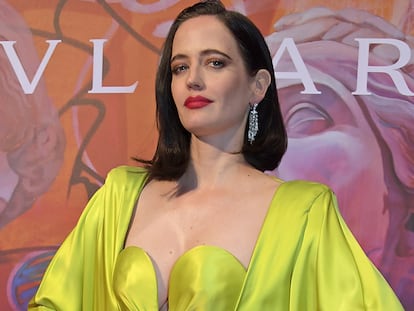The ‘femme fatale’ has never existed: Men were the real fatal ones
Elisenda Julibert’s book ‘Fatal Men’ dismantles the myth of the temptress in literature and film, arguing that the trope is a misogynist response to the traditional fear of women’s liberation
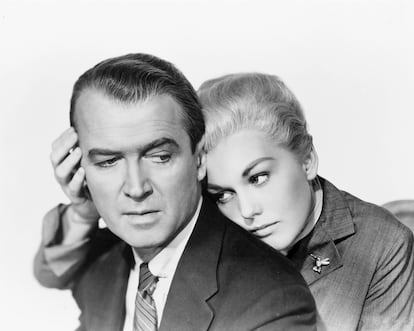
A femme fatale has the gift of ruining the lives of anyone who dares to love her. From Homer’s Helen of Troy to the Bible’s Eve to Nabokov’s Lolita and cinema’s multiple reincarnations of this trope, literature and art are full of women who have caused the downfall of the men who made the mistake of desiring them; such men have been condemned to lose their sanity, their fortune and, sometimes, their lives. Although a detailed analysis of this timeless figure raises certain doubts about its veracity, what if, instead of representing a fatality typical of women, this stereotype reveals a disastrous conception of men’s desire, their efforts to control women who would not submit to their wills, a reflection of the historical dread that many men have felt at the possibility of women’s liberation?
That’s precisely the argument that philosopher Elisenda Julibert makes in her debut book Fatal Men. “After many years of reading, I realized that the femme fatale had no fixed traits, beyond her fateful character. She was blonde or brunette, cold or warm, sincere or a liar, shy or determined, fiery or frigid. In reality, she is as diverse and changeable as the desires of those who imagined the characters,” says the Spanish author and former editor. In other words, the character of the femme fatale was illusory, a product of the fantasies and frustrations of the writers who described these women. After an emotional breakup in which she felt she was treated unfairly, Julibert decided to reverse Alexandre Dumas’s famous maxim: “Cherchez la femme [Look for the woman].” Dumas believed that the key to understanding any difficulty that befalls a man is inevitably a perfidious woman. For her part, Julibert suspected that understanding the proliferation of fatal love affairs in the literature of the past two centuries instead required the examination of men.
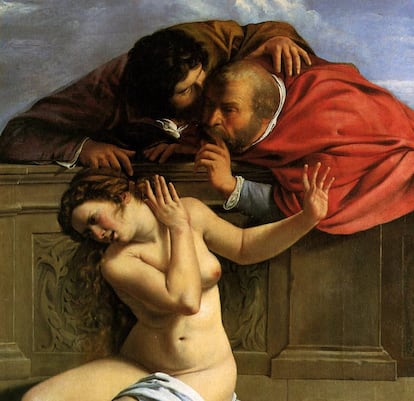
This cultural history of the femme fatale as scapegoat begins with Susanna and the Elders (1610), Artemisia Gentileschi’s painting that reinterpreted the biblical story of two old men fascinated by a naked young woman. Depicted ad nauseam and interpreted as a parable about the overwhelming power of beauty, the tale took on a different meaning in Gentileschi’s rendering. “I had seen dozens of paintings about this story, but her version made me understand that it depicted an abuse of power and an attempted rape,” says Julibert. The author argues that the artist forces the viewer to identify with her painting’s protagonist, as was the case in religious paintings of Jesus Christ.
Similarly, Julibert’s book shifts our perspective on the femme fatale by putting two pairs of examples into conversation with each other. The first is a comparison between Carmen, “the mother of all modern femmes fatales,” and Nabokov’s Lolita. Prosper Mérimée’s story of the Spanish gypsy woman – which was made into an opera by Georges Bizet in 1875 – was actually narrated by Don José, who was trying to convince the audience to absolve him. “His view of this insatiably lustful, parasitic vamp is a bit skewed,” Julibert says ironically. She argues that Lolita can be understood as a distorting mirror of Carmen; it’s “an homage and a critique” of Mérimée’s original text. Again, the narrator is an accused man who tries to convince the reader of his innocence, alleging that a woman has seduced him through her evil wiles. Here, however, he is a madman, and she is a 12-year-old girl.
“It’s a grotesque and wild rereading of Carmen, but also very subtle. I had to read Lolita three times to understand it as a parody,” says the author. The romanticized and somewhat watered-down film adaptations of the book have toned down the novel’s caustic dimension, although Nabokov himself never left any doubt. “Lolita is not a perverse girl, she is a poor child,” he said in his legendary interview on the French program Apostrophes in 1975. “It is the imagination of the sad satyr that makes a magic creature of this little American schoolgirl, as banal and normal in her own way as the poet manqué Humbert is in his… Outside the maniacal gaze of Humbert there is no nymphet.”
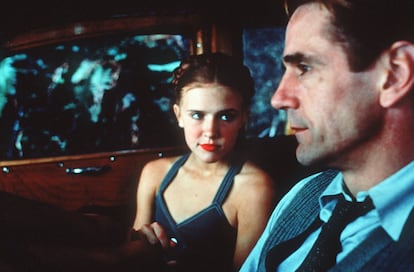
In the other pair of examples, Julibert contrasts films by Alfred Hitchcock and Luis Buñuel. In Hitchcock’s necrophiliac romance Vertigo and Buñuel’s That Obscure Object of Desire, both directors split their female characters to highlight their phantasmagoric character. In Vertigo, Kim Novak played both Madeleine and Judy to show that this woman was not entirely real but rather the product of the leading man’s tortured mind; in Boileau-Narcejac’s novel The Living and the Dead, on which the film was based, the main character was a 30-something virgin. Buñuel similarly chose two actresses, Ángela Molina and Carole Bouquet, to play a single character, the young Conchita. The obfuscated gaze of Mathieu, the lout played by Fernando Rey, serves as the lens through which we see her. Jacques Lacan believed that jealousy is not caused by a loved one’s betrayal but by a joyful masochism that feeds on our fears and insecurities. In literature, Marcel Proust was one of the first to make the same point. He told of an amorous fatality that never originated from the object (Albertine); it came from the subject (the narrator and, by extension, the author himself).
Julibert’s book ends with two counterpoints. First, she discusses Flaubert’s Bouvard and Pécuchet, a parable about love in which femmes fatales are conspicuous by their absence, a rarity in the French author’s time. Instead, Flaubert’s two male protagonists live a relationship defined by a non-erotic, but perhaps healthier, desire. “In the context of sentimental 19th-century literature, which was so heavily inclined toward the passionate and the fateful, Flaubert depicts love that doesn’t fall into such vices as tremendously liberating,” Julibert says of Flaubert’s defense “of boring marriage.” The second example is Some Like It Hot. In the movie, the protagonists discover that Marilyn Monroe’s character is not, in fact, a man-eater but a sweet, vulnerable and unhappy girl with whom they empathize. They come to this realization only by cross-dressing as women, which acquaints them with a reality they had not known before.
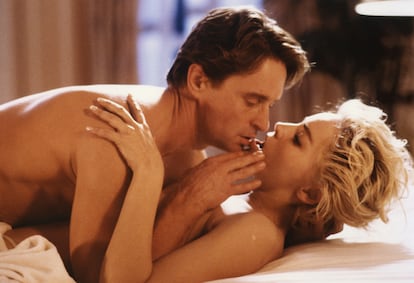
Despite the influence of the post-#MeToo paradigm shift, Fatal Men refrains from delving into recent cinema, in which nostalgic imitations of past figures abound. The author did not find any examples that revive the trope of the femme fatale, with the occasional exception. “For example, Paul Verhoven’s Basic Instinct literally inverts the femme fatale and positively regards everything that, until then, had been seen as a negative. But it seems to me that traits like cruelty and manipulation are difficult to rehabilitate,” says Julibert. In a similar vein, the author rejects any temptation of revanchist symmetry that would objectify men instead.
The author highlights other examples, such as David Fincher’s Gone Girl; she says the film “reminded me of [Pierre] Louÿs’s The Woman and the Puppet [by] insinuating that the bond between the characters is a perfect sadomasochistic relationship.” She also discusses Promising Young Woman, which has contributed to updating (and problematizing) the figure of the femme fatale in movies. And yet, Julibert believes that this trope is destined to fade away. “I think it’s [been] exhausted,” she notes, adding: “I don’t rule out [the possibility] that other equally monstrous female figures will emerge. Misogyny has the power to reinvent itself endlessly. The femme fatale may disappear, but it won’t be long before other terrible mythological creatures appear.”
Tu suscripción se está usando en otro dispositivo
¿Quieres añadir otro usuario a tu suscripción?
Si continúas leyendo en este dispositivo, no se podrá leer en el otro.
FlechaTu suscripción se está usando en otro dispositivo y solo puedes acceder a EL PAÍS desde un dispositivo a la vez.
Si quieres compartir tu cuenta, cambia tu suscripción a la modalidad Premium, así podrás añadir otro usuario. Cada uno accederá con su propia cuenta de email, lo que os permitirá personalizar vuestra experiencia en EL PAÍS.
¿Tienes una suscripción de empresa? Accede aquí para contratar más cuentas.
En el caso de no saber quién está usando tu cuenta, te recomendamos cambiar tu contraseña aquí.
Si decides continuar compartiendo tu cuenta, este mensaje se mostrará en tu dispositivo y en el de la otra persona que está usando tu cuenta de forma indefinida, afectando a tu experiencia de lectura. Puedes consultar aquí los términos y condiciones de la suscripción digital.
More information
Últimas noticias
Most viewed
- Sinaloa Cartel war is taking its toll on Los Chapitos
- Oona Chaplin: ‘I told James Cameron that I was living in a treehouse and starting a permaculture project with a friend’
- Reinhard Genzel, Nobel laureate in physics: ‘One-minute videos will never give you the truth’
- Why the price of coffee has skyrocketed: from Brazilian plantations to specialty coffee houses
- Silver prices are going crazy: This is what’s fueling the rally

